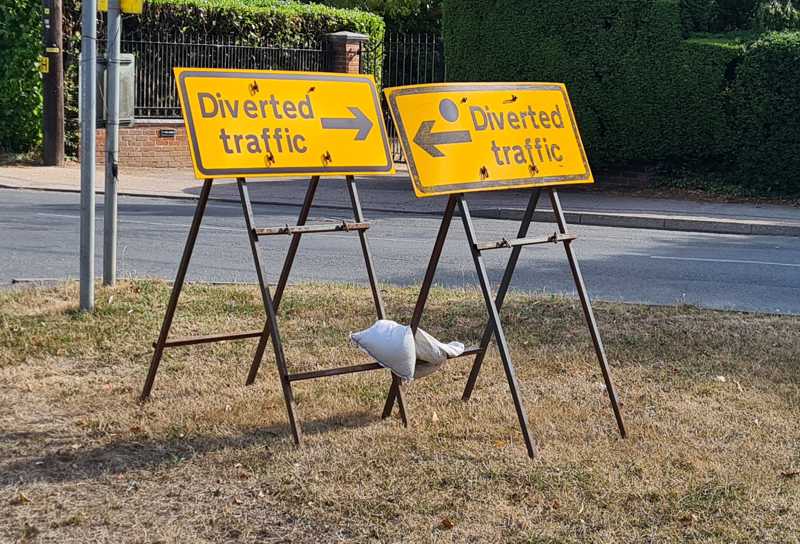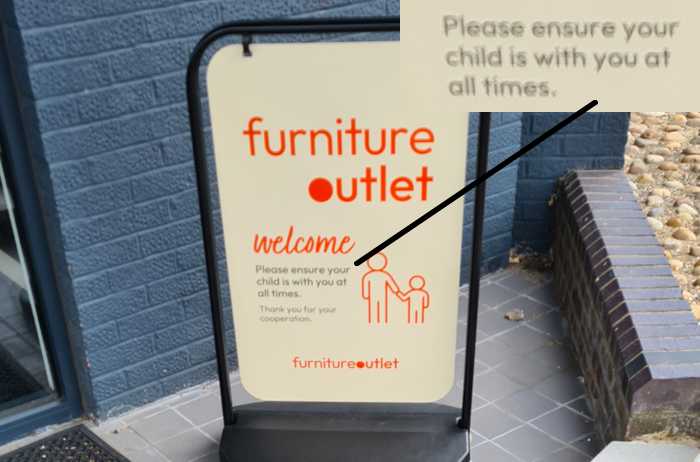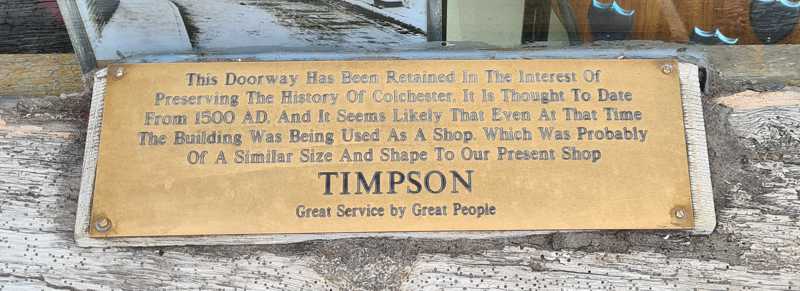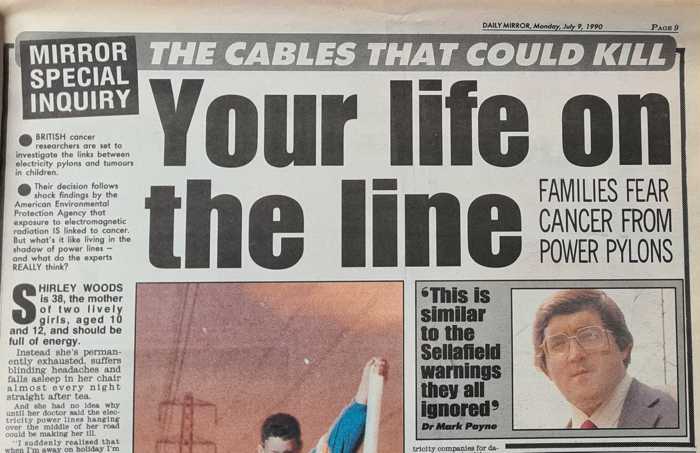
Either someone on the games committee has somehow heard of me, or the organisation is short of funds. Either way, I'm looking forward to settling in.
The everyday blog of Richard Bartle.
RSS feeds: v0.91; v1.0 (RDF); v2.0; Atom.
8:13am on Friday, 18th July, 2025:
Miscellaneous
My application to join BAFTA has been accepted.

Either someone on the games committee has somehow heard of me, or the organisation is short of funds. Either way, I'm looking forward to settling in.
9:50am on Thursday, 17th July, 2025:
Comment
I finished reading Strange Tales from a Chinese Studio earlier this week.
It's a collection of short stories by Pu Songling, which he wrote over the course of many years in the second half of the 17th Century. Many of the stories are based on folk tales, so I thought I'd give it a go because an earlier book I bought about Chinese folk tales didn't actually include any folk tales, just discussions of folk tales. As for why I wanted to read Chinese folk tales in the first place, well I'd just read a book of English folk tales and figured I should expand my horizons.
I have to say, they're certainly strange tales. Some have no discernable plot, and most are very short — half a page to two pages. A few are several pages longer, but not many. I was expecting something like The Decameron, but it wasn't like that at all. They're more like campfire tales, ending in either a precautionary warning or (more often) something amazing. Often, they start with something weird and end in an explanation in terms of the supernatural or of someone's strength of character (being clever, being fearless, that sort of thing).
Some tales are retellings of tales Pu had heard from friends, but others are original. Many include some kind of credit, mentioning from whom Pu heard them; in a number of cases, the people featured in the stories appear in historical records. That doesn't mean the stories are true, of course, and when you read them it's clear that the majority of them simply aren't. They're not meant to be, though: the sources add authenticity, but it is a work of fiction.
The author is famously lauded for his erudition, making many subtle references to ancient (or at least older) Chinese myths and stories while weaving his narratives. Even modern Chinese readers would have a hard time recognising many of these, because the target audience was well-educated men of rank who used a somewhat esoteric version of the language. In the translation I read, the most important of the allusions are explained in endnotes, which were interesting if not really adding much to the stories. Also in the endnotes were an occasional selection of comments made by people who had written about the collection in the past. They seem to see allegories everywhere, and in my view are usually over-reading. Sure, you can interpret some action as a Taoist homily, but you can interpret pretty well anything as a Taoist homily if you put your mind to it.
Some of the footnotes were longer than the stories.
As for what I learned about Chinese folk tales from this, well I was surprised by how many feature foxes. These are literal foxes, but they're also evil beings who take on human form and prey on innocents. This negative view of them seems to have been the default opinion of the target audience, so whenever the foxes turn out to be good, rather than evil, it's treated as being unexpected. Sadly, because I'm not particularly anti-fox myself, I wasn't quite as shocked as the mandarins of 1780 would have been when the fox in a tale didn't turn out to want to suck the life out of people — although a good many of them did, of course, usually because their victim fell under their spell. The good foxes weren't just good, though, they were super-good, always dutiful and devoted (if female) or excellent company (if male). Also, although it might have been unexpected for the original readers to learn that a beautiful young woman was in fact a fox, this revelation happened so many times that it was refreshing when a beautiful woman turned out not to be a fox (she was usually a ghost instead, but occasionally something else such as a bee or the daughter of a god).
Interestingly from my point of view, Strange Tales from a Chinese Studio shares similarities with my book, Dheghōm, except that its tales are all written in the same voice and they don't come together to form a narrative. It was an interesting and at times entertaining read, anyway, even if it did become a bit samey by the end.
Overall, I quite enjoyed it.

8:32am on Wednesday, 16th July, 2025:
Weird
It looks as if the days of gorging yourself at the local pick-your-own fruit farm are over.

9:39am on Tuesday, 15th July, 2025:
Weird
There are emergency roadworks in the village, so there's a diversion.

I feel this must be a metaphor for the state of the world or something.
12:59pm on Monday, 14th July, 2025:
Outburst
There should be some kind of law that forces confectionary manufacturers who sprinkle their confectionary in coconut flakes to state, in big letters on the front of the packaging, that they have sprinkled coconut flakes on their confectionary.
I was really looking forward to that Turkish delight.
9:47am on Sunday, 13th July, 2025:
Anecdote
I've been playing Palia recently, and (after 74.5 hours) have reached the point where I'd decided I'd stop.
It's an interesting virtual world, in that it doesn't have combat but still has a pile of the cookie-cutter quests you find in regular MMORPGs, mainly gathering, crafting or FedEx in format. It also has a lot of home-improvement content.
The setting isn't really Fantasy or Science Fiction. The idea is that the world was once dominated by humans who mysteriously disappeared, and it's now populated by other humanoid species (who are purple). You're a human who has suddenly appeared in their world, and neither you nor they know why. The game is only in beta, so right now we don't actually find out why, but I'm sure it'll be made clear in future patches and expansions.
As such, there isn't really a main story quest. The most immediate long-term goal is to get yourself a "shepp", meaning a local who'll vouch for your good nature so you can become a fully-fledged member of the village. There are about 30 villagers, all with distinct personalities and jobs, although not all are able to be shepps (some are too young, some are mechanic beings). You have to grind reputation with one until you manage to reach a certain threshold, then they'll agree to be your shepp. You can chat with them and give them gifts to increase their opinion of you, then upon reaching a particular level you can start flirting with them. I don't know if flirting is essential to get to shepp-compatible level, but I did it anyway seeing as how I was visiting the same villager every day to grind some more rep anyway.
There are skills in the game that you can level up: gardening, cooking, hunting, fishing, mining, foraging (which includes tree-chopping), furniture-making and bug-catching. I don't know what the bug-catching is good for, other than "catch me five grasshoppers" quests, but it probably plays or will play more into fishing or hunting or something later on.
The players are friendly, but somewhat insular. I initiated conversations with several of them, but no-one ever initiated one with me. I suspect that people either play solo or with real-world friends; I didn't ask.
Anyway, Palia certainly different, and if you're not a fan of combat and like playing with no direction at your own pace, you might enjoy it. Personally, I got rather tired of the repetitive nature of the quests, even if the flavour text was fresh. I was glad when I got my shepp and felt qualified to quit.
As you can tell from the screenshot, I'm not really into gardening or home-making either.

By the way, "Mareigh" is one of the names on my roster for MMO characters. I invariably use "Richards" as a surname because "Richard's" doesn't really work.
9:47am on Saturday, 12th July, 2025:
Weird
I'd have thought by now that every retailer would have been aware of this kind of comedy sign wordage, but apparently not.

"But one child lives 200 miles away and the other is at home with her baby!"
8:56am on Friday, 11th July, 2025:
Weird
I know peppers are supposed to be hot, but these seem rather more amorous than most.

8:56am on Thursday, 10th July, 2025:
Outburst

9:29am on Wednesday, 9th July, 2025:
Weird
Timpson is a chain of shops that does all kinds of small walk-in jobs for you: key-cutting, shoe heel repairs, watch repairs, dry cleaning and engraving. It's one of the most progressive companies in the UK (employees have free rein to do whatever they think will deliver good service, employees get their birthdays off work, 10% of its employees are ex-convicts, ...). In general, it's one of the most admirable companies in the UK, despite its rather humble service offerings.
One of the shops in Colchester is in an old building, which has this plaque attached to it:

To save you from straining your eyes, here's what the text says:
"This Doorway Has Been Retained In The Interest Of Preserving The History Of Colchester. It Is Thought To Date From 1500 AD. And It Seems Likely That Even At That Time The Building Was Being Used As A Shop. Which Was Probably Of A Similar Size And Shape To Our Present Shop
TIMPSON
Great Service by Great People"
That use of a capital letter at the start of every word is somewhat ... unconventional. Only in the last line, which is probably corporate in origin, is it more like what would be expected in English. Also, the second and third phrases following the full stops aren't sentences. The final sentence doesn't end in a full stop, either.
Timpson may be good at engraving, but I'd want to see what the output was going to look like before I asked them to engrave me anything.
I do have a jacket with them for dry cleaning at the moment, though. They really do offer a Great Service.
8:25am on Tuesday, 8th July, 2025:
Anecdote
I went to the dentist yesterday to have some work done on a tooth that will need a crown. It only needs a crown so that I can get an implant next to it: it was at an angle, and apparently they don't make molar implants the shape of a Lego roof tile.
The dentist (who's really good — he trains other dentists) gave me an injection and told me my lip would start going numb, which it did. That is, it started to go numb, but didn't actually go numb.
The dentist started drilling, but in one particular place I could feel it. It rather hurt.
He gave me some more numbing agent, waited a couple of minutes, and carried on. My lower lip was numbish where he said it would be numb, but when he drilled the part of the tooth where it had previously hurt, it still hurt.
The dentist gave me another dose of whatever it is in the needle, and waited another minute or so, then he continued. My lower lip was still not entirely numb, and when he reached the bit that hurt, well, I could still feel it but the pain was bearable. He did whatever it was he needed to do and carried on. There was no more pain thereafter.
However, while he was working with his drill, all three jabs kicked in at once and my lower lip on the right-hand side turned to rubber. My tongue was numb at the same side, and everywhere on my cheek from my chin to my cheekbone was also numb. It took four hours before it all came back, and when it did my jaw muscle where the jabs had gone in was so stiff I could barely open my mouth enough to shovel food in. It's still a bit stiff this morning.
That's not the weird thing, though. That was when my cheek was completely numb and started to itch. I don't know how something I couldn't feel could itch, but it did. Scratching it did nothing, and was a bizarre experience in itself because I could feel where I was scratching with my finger but not with what was being scratched. As a result, I got a glimpse of how people with phantom limb syndrome must feel; they have my complete sympathy.
Anyway, the exercise was a success and I'll be getting my implant and new crown at the end of next week.
I rather hope they fit, as I'll be going to my elder daughter's wedding the week after, and don't want to be unable to eat cake.
8:38am on Monday, 7th July, 2025:
Weird
When I was in the beautiful village of Nerja last year, I spotted these trees racing to be first to jump into a swimming pool.

I bet one of them has reached it by now.
9:56am on Sunday, 6th July, 2025:
Weird
This is the sign for an "espresso lounge" in Colchester:

It seems to have expanded its remit to include non-espresso items such as cakes, sandwiches and something that might be teas, might be coffees.
What I like about this sign, though, is the apostrophe in "Panini's". None of the other plurals have spurious apostrophes, so it gives the impression that it's a genuine, possessive apostrophe, and therefore the jacket potatoes belong to the panini in some way.
I've never eaten there, but given that this particular espresso lounge also serves a full English breakfast all day, perhaps I shall.
If only the espresso lounges in Italy did that, Italians wouldn't be such healthy people.
10:31am on Saturday, 5th July, 2025:
Weird
From the front of the Baptist church in the middle of Colchester:

I thought Victorian builders were supposed to be good at their jobs, yet here they are, constructing a church that has to be fixed up less than fifty years later.
You're not as good as you make out you are, Victorian builders.
10:55am on Friday, 4th July, 2025:
Weird
In case you throught that social media were entirely responsible for menacing conspiracy theories, here's an article from the Daily Mirror, dated 9th July, 1990.

I happen to have a copy because I bought a copy of every newspaper on 9th July, 1990.
Latest entries.
Archived entries.
About this blog.
Copyright © 2025 Richard Bartle (richard@mud.co.uk).